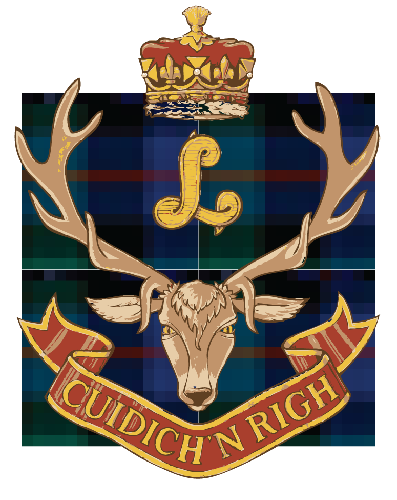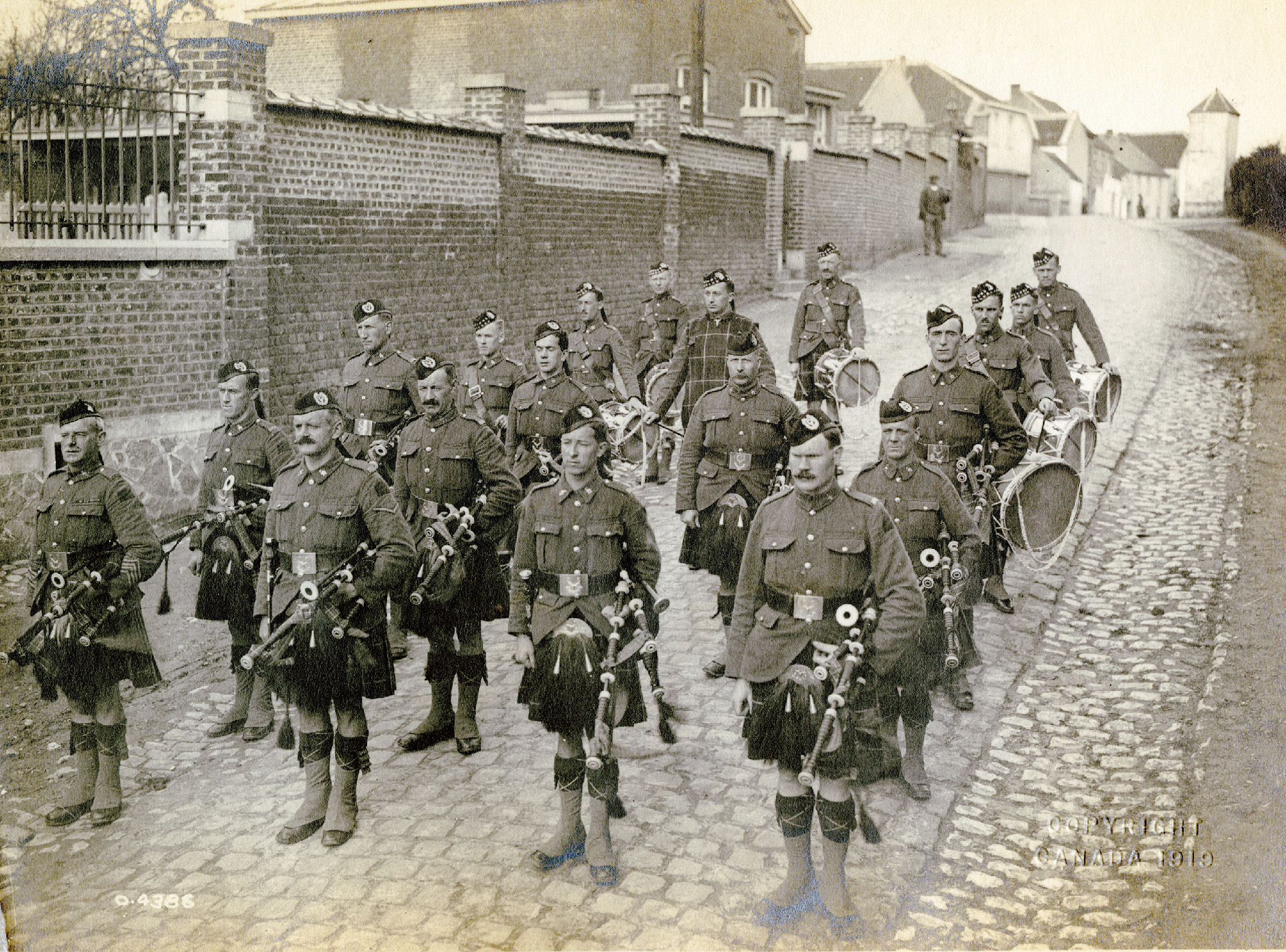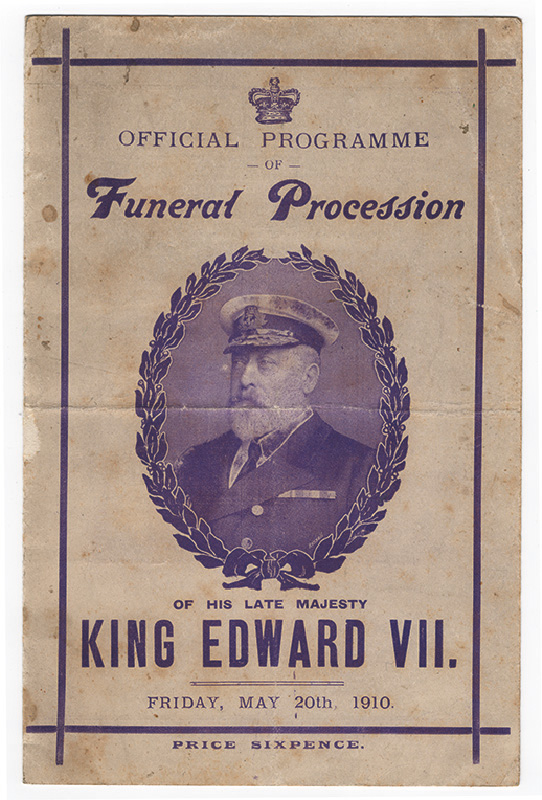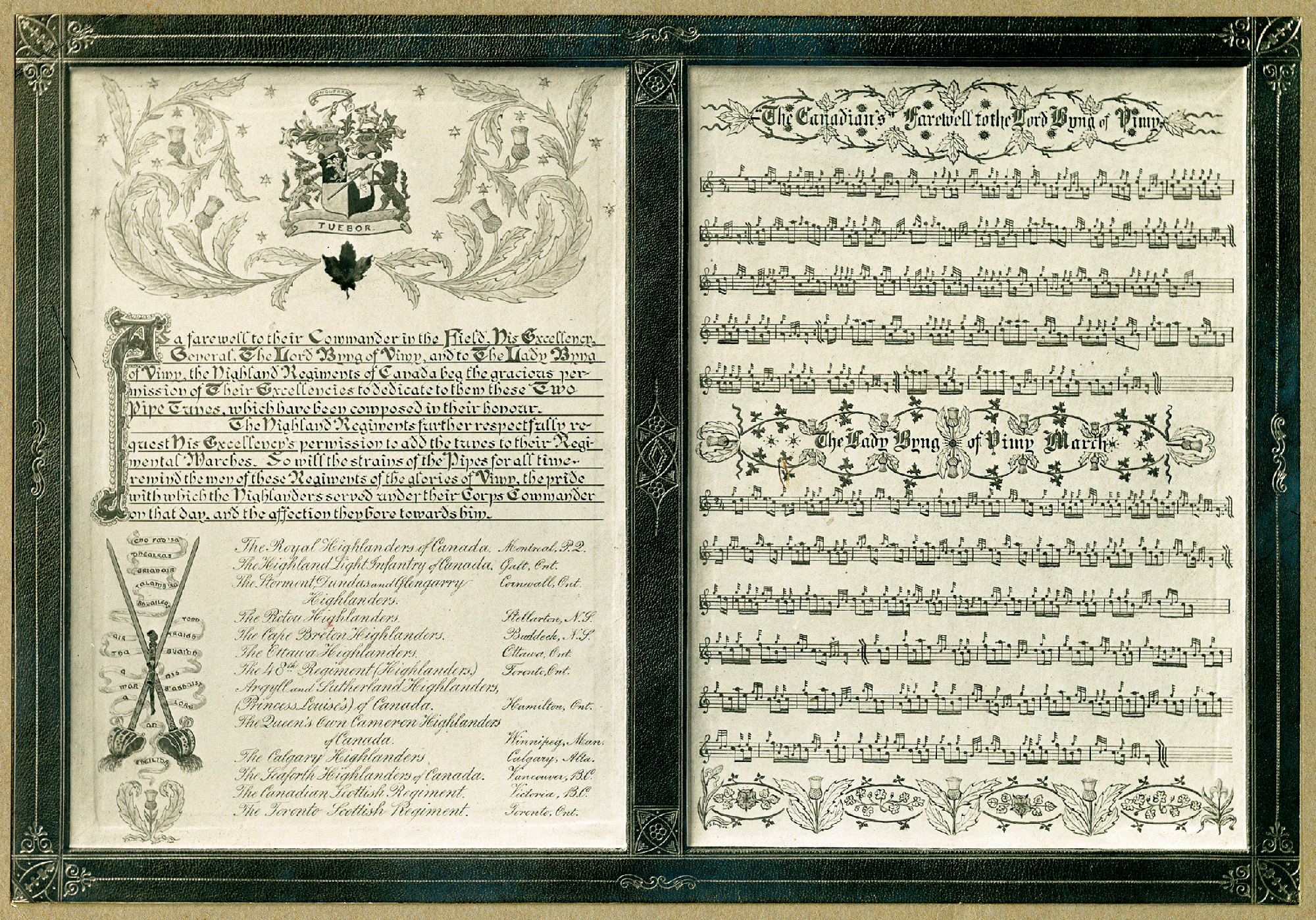Pipe-Major John Gillies
The Seaforth Highlanders of Canada’s First Pipe-Major.
John Gillies was born April 13th, 1873 in Baillieston, Scotland, approximately 10km east of Glasgow. In 1892 he joined the Scots Guards as a piper, and during the Second Boer War (1899-1902) he went into action as a pipe-sergeant. Gillies was promoted to pipe-major in 1902.
John Gilles circa 1913, in front of the Elysium Hotel on Pender Street.
Pipe-Major John Gillies’ Medal Group: Queen’s South Africa Medal, with bars for Belfast, Diamond Hill, Johannesburg, Driefontein, Paardeberg, Modder River, Belmont; King’s South Africa Medal, with bars for 1901 and 1902; British War Medal; Victory Medal; King George V Silver Jubilee Medal; Meritorious Service Medal; British Regular Army Long Service and Good Conduct Medal; Colonial Long Service Medal.
Returning from South Africa, Gillies was appointed the pipe-major of the 3rd Battalion Scots Guards, serving in that capacity from Dec. 15th, 1903 until Sept. 30th, 1906, when the 3rd Battalion was disbanded. He was then appointed pipe-major of the 1st Battalion Scots Guards, a position he would hold until Jan. 31st, 1911. All told, he would serve with the regiment for eighteen and a half years.
One particularly notable moment from late in his career with the Scots Guards occurred when, as the senior pipe-major in the British Empire, he led the massed pipe bands through the streets of London for King Edward VII’s funeral procession in 1910.
When the Seaforth Highlanders of Canada were organized in late 1910, efforts were immediately made to form a first-rate pipe band. W.M. Crawford, a wealthy Vancouver businessman from Fifeshire, took it upon himself to convince John Gillies to come to Canada to organize and lead the Seaforth’s pipe band. Attracting a pipe-major of Gillies’ stature was a major coup for the young regiment, and in very short order Gillies would mould the Seaforth’s into one of the premier pipe bands in Canada.
John Gillies in Pretoria, Transvaal, during the Second Boer War.
In 1916 the Seaforths went overseas to fight in the First World War; Pipe-Major Gillies, then forty-three years old, led the pipe band overseas with distinction. He and the band repeatedly did duty with the battalion in the front line trenches, and for a period of four months over the winter of 1916-17, the pipe band did duty continuously in the line, culminating in the attack on Vimy Ridge. On many occasions throughout the First World War Gillies acted as battalion sergeant-major, and in the words of the commanding officer, J.A. Clark, “his conduct has been a splendid example to all ranks and has been in no small degree responsible for the espirit de corps of the unit.”
John Gillies was awarded the Meritorious Service Medal at the end of the war; in addition to his work at the Front, the citation notes “he has maintained a high standard in training his band at all times.” This “high standard” was on display in a competition held in 1918 at Tinques, France when the Seaforths were ranked as the best pipe band in Canada and third best in the British Empire.
When the Seaforth Highlanders of Canada were organized in late 1910, efforts were immediately made to form a first-rate pipe band. W.M. Crawford, a wealthy Vancouver businessman from Fifeshire, took it upon himself to convince John Gillies to come to Canada to organize and lead the Seaforth’s pipe band. Attracting a pipe-major of Gillies’ stature was a major coup for the young regiment, and in very short order Gillies would mould the Seaforth’s into one of the premier pipe bands in Canada.
John Gillies had this shilling stamped with his initials on the obverse and drilled so he could wear it, presumably to mark his "taking the Queen's shilling" i.e.: joining the British Army.
Gillies was held in such universal esteem that when the Seaforth Highlanders were reorganized after the First World War, Gillies was given regimental number “1” on the regiment’s nominal roll.
The pipe band of the 72nd Seaforth Highlanders of Canada during the First World War. Pipe-Major John Gilles can be seen at the far left.
“Gillies sure had his band drilled to perfection. There were a number of crack Imperial bands there, but as far as the drill end of it went, the 72nd had them all beat. They were the smartest bunch of them all.”
Postcard circa 1907-1910, signed by Gillies, after he became pipe-major of the 1st Battalion Scots Guard.
Procession for King Edward VII.
Pipe-Major John Gilles led the Canadian contingent during the March through London in May 1919.
Throughout the 1920’s and 1930’s, the Seaforth Highlanders of Canada’s pipe band continued to be synonymous with excellence, dominating the competition for the J.W. Stewart Trophy, winning in 1922, 1924, 1927, 1929, 1932, 1934 and 1936.
After overseeing the pipe band through the opening of the new armoury, as well as the royal visit in 1936, Pipe-Major John Gillies retired in 1937. The regiment presented him with a beautiful set of silver and ivory Henderson Pipes to mark the occasion, and to express their thanks to the only pipe-major the Seaforths had ever known.
These two pipe tunes were presented to Lord & Lady Byng by John Gilles at the 4th Annual Vimy Dinner at Government House, Ottawa, on April 9th, 1926. The Lord Byng tune was likely written by John Gillies.
On April 19th, 1944, Pipe-Major Riddle and his Lovat Scouts pipe band visited Vancouver, and were invited to an evening of entertainment in the Sergeant’s Mess. Retired Pipe-Major John Gillies was in attendance, and was asked to say a few words. He spoke of his time in South Africa when he first met members of the Lovat Scouts, and said that is was possible he had then talked to men who might possibly be the fathers, or perhaps grandfathers of the men present. Gillies recalled his boyhood in Scotland, his fondness then of watching the ships sail in and out of the harbor, and, noting the Lovat’s were a long way from home, he wished them “God speed.”
Enjoying the evening’s entertainment, and smoking his pipe, John Gillies suddenly collapsed. A few moments later the medical officer announced that “Pipie” had passed on.
R.S.M. Douglas requested that Pipe Major Riddle play “Lochaber No More” and as the wail of the lament echoed down the long corridors and onto the drill hall floor of the Seaforth Armoury, four Seaforths carried our beloved Pipe-Major John Gillies from the Sergeant’s Mess.
November 11, 1934










